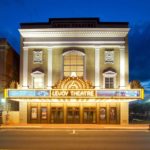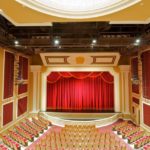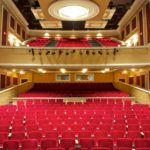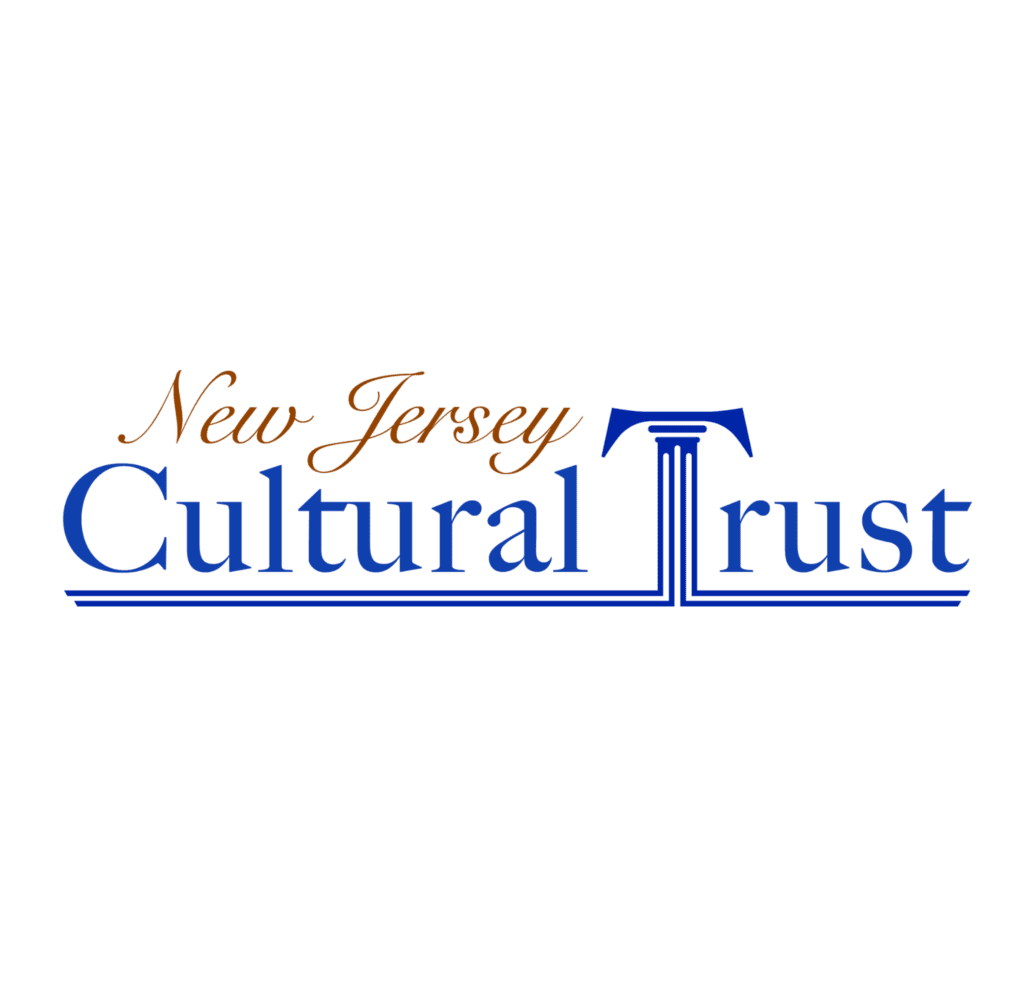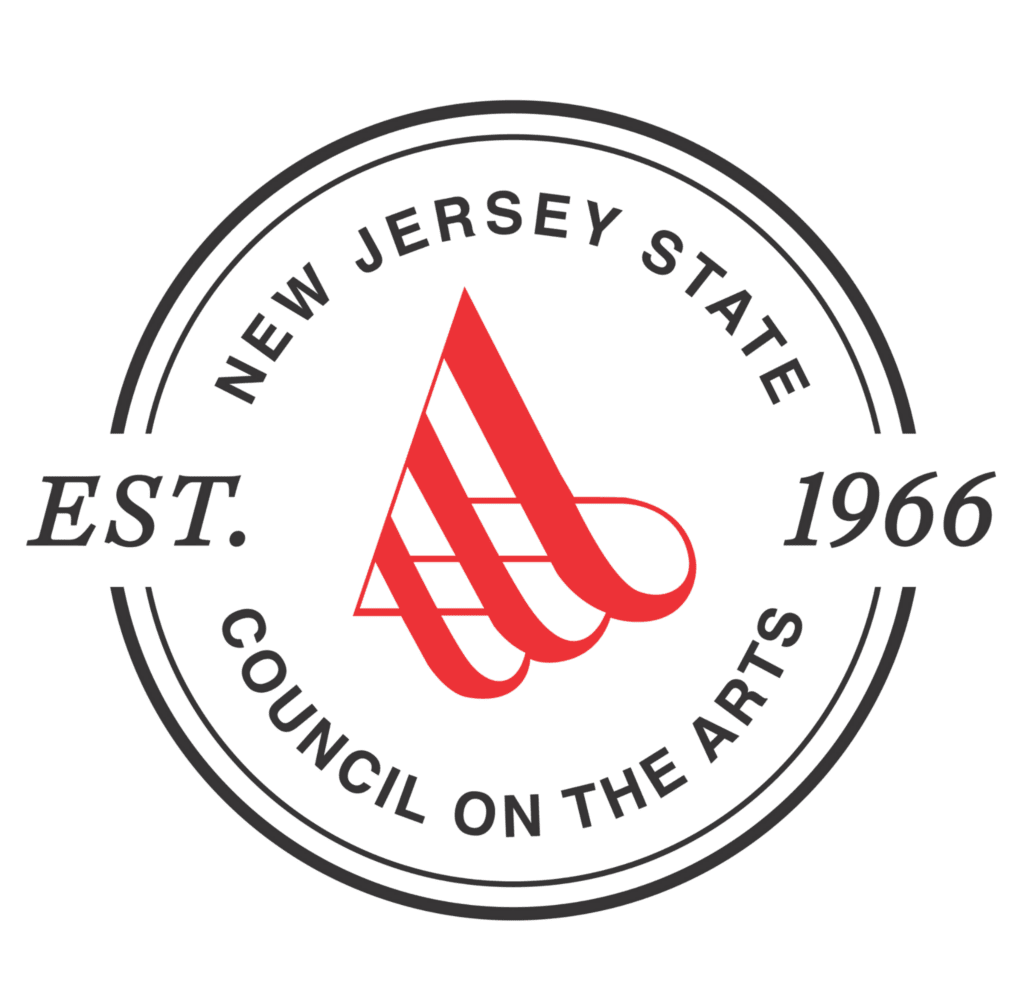Mission Statement
The Levoy Theatre Preservation Society is a not-for-profit organization committed to reviving and continued operation of Millville’s century old Levoy Theatre as a performing, screen arts and educational center serving Southern New Jersey and surrounding areas. Our mission is to meet and exceed the needs of an active and vibrant arts community through state-of-the-art technology, historic interpretation, culturally diverse programming and performing arts education for all ages and abilities. The mission of the Levoy is to serve as an economic, educational, cultural and entertainment catalyst for the people of Millville and greater South Jersey. Our mission encourages people of all economic levels to celebrate the rich history of the building, attend a diverse mix of entertainment and educational programs and grow or enhance an appreciation of the performing arts, by creating opportunity for cultural enrichment. Our mission includes maintenance of this world-class venue to enhance enjoyment of its use, contribute to the cultural and economic vitality of the community and the region, and honor the rich history of the Levoy brings to the City of Millville.
Our History
Updated in 2021 The Levoy Theatre, as it stands today, opened in 2012 to joyous fanfare and thundering applause. The year 2012 itself now seems a century ago, ensconced in smaller iPhones, silly memes, and ne’er a facemask in sight. But, the Levoy Theatre, as it once stood a century ago, began with a fire. The brick plaza at High and Sassafras Streets was once the Wilson Opera House. A fiery conflagration reduced the opera house to smoldering ash in the 1890s, and left Millville in need of a performing arts center. The Somers Era (1908 – 1927) Around the time of the fire, William “Pop” Somers was fighting a tumultuous legal battle with George Ferris, the man ultimately credited with the invention of the Ferris Wheel. Somers had created and patented a similar amusement called the Roundabout years before Ferris built his own. The court ruled Ferris could keep the name Ferris Wheel because his was made of metal, whereas the Somers Wheel (the Roundabout) was made of wood. Eager to not give up, Somers relocated to Millville, and built a small entertainment center near the corner of High and Pine Streets. He put a small theater on the first floor and a dance floor on the second. It was a small, ordinary theater for the era in which it was built. It was billed in the newspapers as Somers’ “New Amusement.” He simply called it Levoy. Over the course of the next century, it would grow into one of Southern New Jersey’s most prominent and beloved landmarks. The demand for the Levoy increased after its opening in January 1908, so Somers hired Col. Ellsworth Shaw to double the theater’s size – a job that took approximately six months – with a larger stage, a balcony, and a broader façade. The “New Levoy” as Somers renamed it, opened on November 4, 1912, with a mix of vaudeville, silent film, and a variety of other entertaining acts of that time. The Handle & Rovner Era (1927 – 1939) The New Levoy was expanded again. Somers leased it to Morris Handle and A.J. Rovner. The auditorium was expanded to 1,100 seats, the balcony to 400 seats, and a Lenoir Pipe Organ was installed. The theater dazzled with a new chandelier, marble staircases, an overhead stage-fly system, and an orchestra pit. A new façade was erected with yellow-gray brick, white columns, and an electric marquee designed with abstracts of light-bulb-decorated peacocks to woo passersby to the many shows inside. The “Theatre Beautiful” opened on September 19, 1927 with a bill of live vaudeville. The Warner Bros. Era (1939 – 1952) The Levoy enjoyed more than a decade of live success before Warner Bros. started eyeing the venue. As the popularity of live entertainment (vaudeville specifically) waned during the lead-up to World War II, in favor of talking pictures, Warner Bros. updated the Levoy to support RCA sound and modern film projection. The iconic peacock marquee was disassembled and replaced with a neon, art-deco marquee. On August 18, 1939, Warner Bros. opened the Levoy to the Golden Age of motion pictures. The Mori Era (1952-1959) The popularity of television in the 1950s brought the entertainment and news, previously exclusive to theaters, into everyone’s living rooms. The TV competition, combined with the Federal Government antitrust crackdown on Hollywood’s stranglehold on distribution, caused studio profits to drop significantly. In an effort to cut their losses, the Studios began divesting themselves of real estate. In 1952 Warner Bros. sold the Levoy to Eugene Mori, owner of the Landis Theater in Vineland. The post-WWII, nuclear family era was not kind to the Levoy, especially now that visual entertainment could be had in the living room on television, and the Levoy declined in popularity. The Cherivtch Era (1958 – 1974) The theater was now a losing business, and the Levoy ownership changed again, this time to Simon Cherivtch, businessman and former Millville mayor. Cherivtch took control on August 28, 1958 and quickly made his message clear on what he planned for the Levoy. He stated if attendance kept declining he would find another use for the building, possibly a supermarket or small shopping center. This was a serious threat to the Levoy, since everybody knew Cherivtch had bought the Peoples Theatre (across from the Levoy) in the early 1950s, closed it, and converted it into a modern store. Cherivtch made several initial attempts to increase attendance, including an attempt to revive live performances with such acts as former Vaudevillians Olson & Johnson’s “Hellz-a-Poppin” and risking arrest for violating local Blue Laws by threatening to open on Sunday, February 22, 1959. Throughout the 1960s Cherivtch tried many times to bolster Levoy crowds and revenues. He tried parades. He tried elephants. He tried giving children silver dollars. He tried telling people The Beatles would show up. He tried and tried and tried. Tired of trying to maintain an unprofitable business, in the early 1960s, Cherivtch modified the front part of the building by removing most of the lobby, the south staircase and several rows of seats in the auditorium to create two retail shops. Cherivtch tried several times to sell or lease the Levoy to groups like the Jaycees or even to regional theatre circuits, but all were unsuccessful in running the theatre and the title eventually went back to Simon. The Siegal Era (1974 – 1976) Cherivtch sold the theater in 1974 to Seymour “Sy” Siegal, who planned on a renovation and reopening. Some improvements were made, and the theater was reopened for about a month between November and December 1974. The city permanently closed the theater on Christmas Eve 1974. Two years later, the city threatened demolishing the Levoy, but the demolition never occurred, as it less expensive to leave the Levoy Theatre as it stood in its state of disrepair. It stayed that way for nearly 40 years. The Diegidio Era (1980 – 1998) Siegal sold the Levoy Theatre to Blaze Diegidio in 1980. Diegidio planned to renovate the Levoy into a mini-mall, but that never materialized, so he had the second floor mezzanine converted into residential apartments. Diegidio opened the Levoy in 1994, not to performers and audiences, but to a tour group of interested citizens who wanted to restore and reopen the Levoy. Joseph Pierce Jr., a young man eager to make a positive impact on his hometown after he graduated college, was on the tour. The Pierce Era (1995 – 2000) Pierce convinced his father, Pierce Sr., and his friend Jeffrey Page, to form the nonprofit Levoy Theatre Preservation Society (LTPS), dedicated to restoring the theater. Diegidio, however, still owned the theater, and was not eager to sell to a nonprofit. However, he died in 1998, and his survivors sold the Levoy to the LTPS. The same year, Walter A. Webster, an educator from Bridgeton, founded the Off Broad Street Players Theatre Company (OBSP) a group of actors and artists performing plays and musicals mostly in Bridgeton church basements, a fire hall, and high school auditoriums. Meanwhile in Millville, Pierce had the Levoy recognized with the National Register of Historic Places in August 1998, and began fundraising and theater stabilization efforts. Pierce was a positive, passionate force in the community. He had already been elected as the youngest member of the Millville Board of Education, worked for the cities of Hammonton and Bridgeton in neighborhood preservation, attained a Bachelor’s degree in historic preservation from Mary Washington College in Fredricksburg, Va. – all after graduating from Millville High School as salutatorian in 1993. Despite two strong years of optimism and change at the Levoy Theatre, the LTPS experienced a tragedy that left the group struggling for years. In July 2000, Pierce, a member of a Cumberland County Big Brother Big Sister organization, was at Union Lake spending time with one of the organization’s children. A swimming accident occurred, and Pierce was able to save the life of the child, but lost his own life in the process. Pierce was 24 years old. The Van Embden Era (2008-Present) In 2007, a young attorney, fresh out of law school, returned to Cumberland County to work for her father’s law firm in Millville, and perform with the Off Broad Street Players (OBSP) in Bridgeton. Lauren Van Embden performed the role of Nellie Forbush in “South Pacific” in November of that year in the auditorium at Bridgeton High School and was inspired to help OBSP realize its dream of one day having its own theater in which to perform. At that time, downtown Millville itself was experiencing a revitalization, starting a new life as an arts district, replacing dilapidated and vacant storefronts with art galleries, restaurants, and small businesses. Early the following year, Van Embden collaborated with her father Phillip, and convinced the LTPS to join forces with OBSP to reopen the theater. Phillip and Lauren were brought onto the LTPS board of directors. When they joined with OBSP, the old Levoy marquee was dressed to read OBSP + LEVOY PERFECT TOGETHER. Thousands of petitions signed by a range of supporters from local artists to Broadway stars were delivered to the Millville City Commissioners just before Christmas 2008, supporting the effort to reopen the theater. A thrill of hope ran through the downtown. Despite an economic recession, and a partial collapse of the theater’s façade, the LTPS and OBSP created the Levoy Renaissance Project, transforming the dilapidated shell of the former theater into a multi-million dollar, cutting-edge, performing arts complex that also resembled parts of the original theater and honored the city’s history. The theater even replaced the 1970s marquee with a reproduction of the 1920s peacock marquee – illuminating High Street and welcoming patrons back to the Levoy. The renovation of the Levoy began in May 2011 and was completed by September 2012. The new 696-seat, state-of-the-art, Levoy Theatre reopened on September 9, 2012 with a silent film underscored by the Peacherine Ragtime Orchestra – similar to the programming when the Levoy first opened. The official grand opening gala occurred on September 22, 2021 with a reception in the new mezzanine under the new chandelier and permanently-installed Millville history cyclorama, followed by the premier of the play “Roundabout, A New Amusement” by Jim Cook Jr., which highlighted the history of William Somers, the Roundabout, the 1912 opening of the Levoy Theater. The play was followed by a concert of musical theatre numbers performed by the Off Broad Street Players. Since the reopening in 2012, the Levoy Theatre has hosted tens of thousands of patrons, attending rock concerts, comedy shows, musicals, plays, ballet, films, educational summer camps, Santa Claus, and a variety of other spectaculars. In 2021, the Board of Directors announced the development of the Levoy Education Center, located on Pine Street, adjacent to the theater, which will host theatre, music, dance, and art courses, workshops, and performances for all ages and economic backgrounds. The Levoy Theatre is back open, and continues to entertain, educate, and inspire all generations that pass through its doors – and is expected to for the next century to come.

